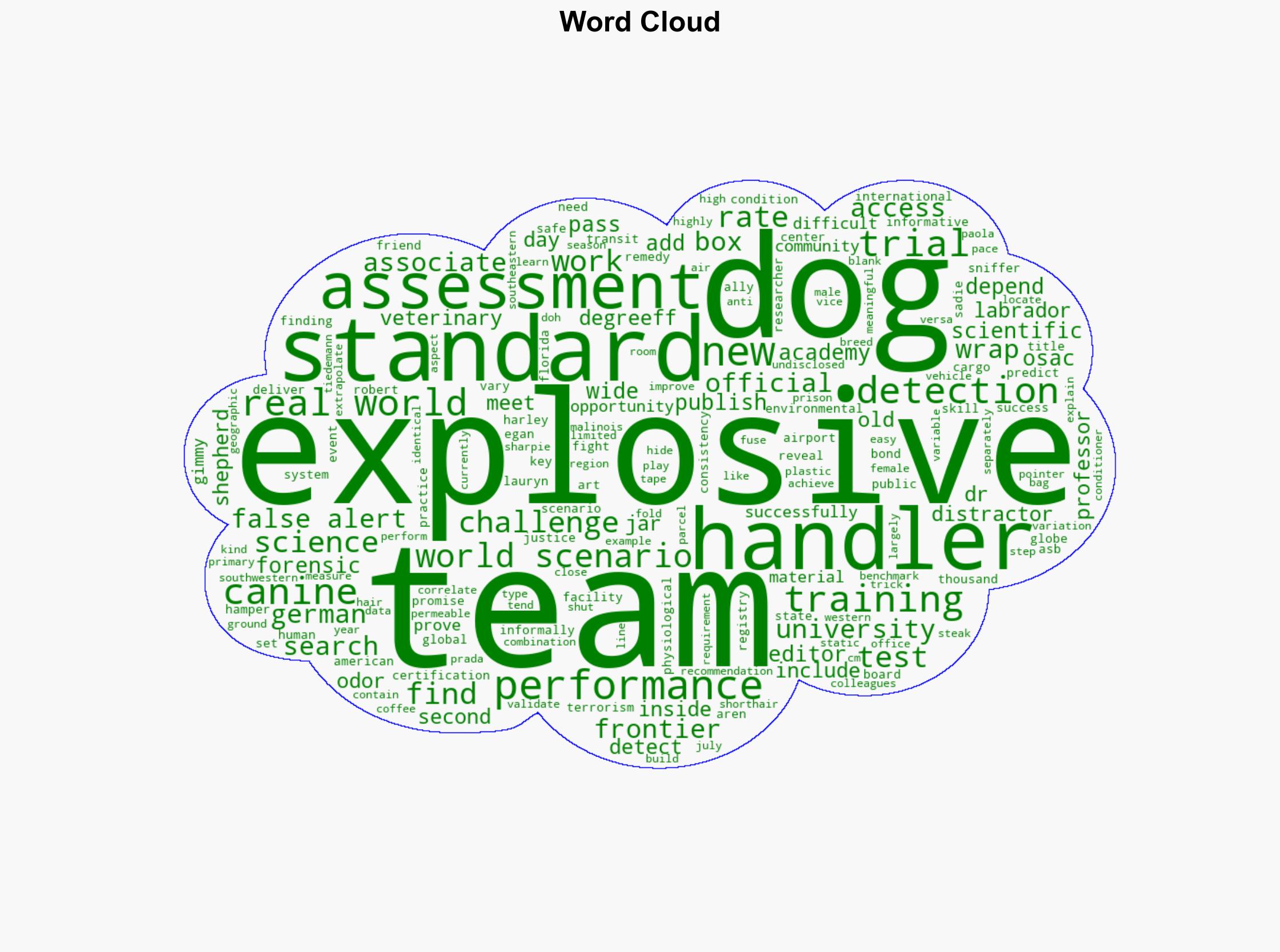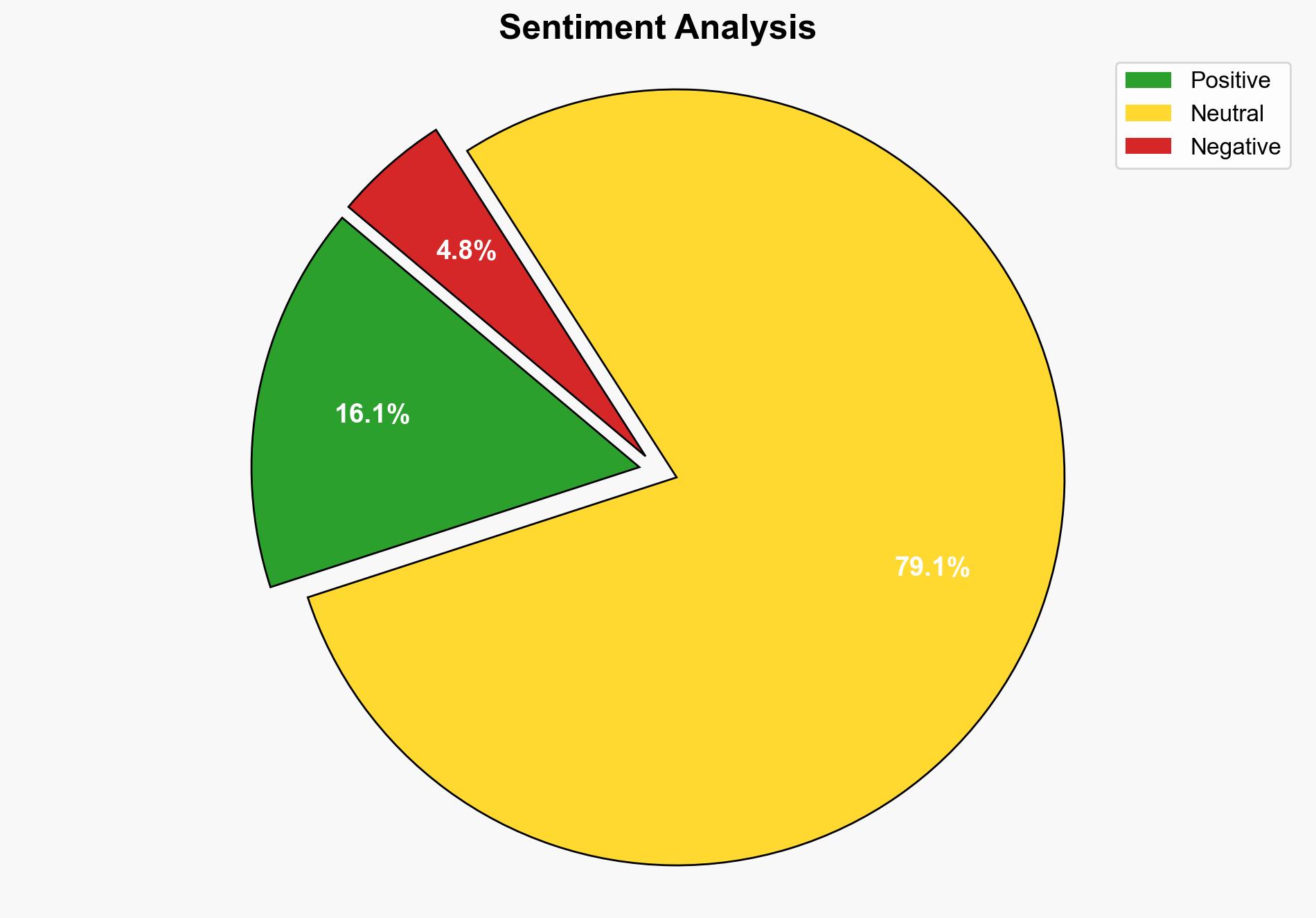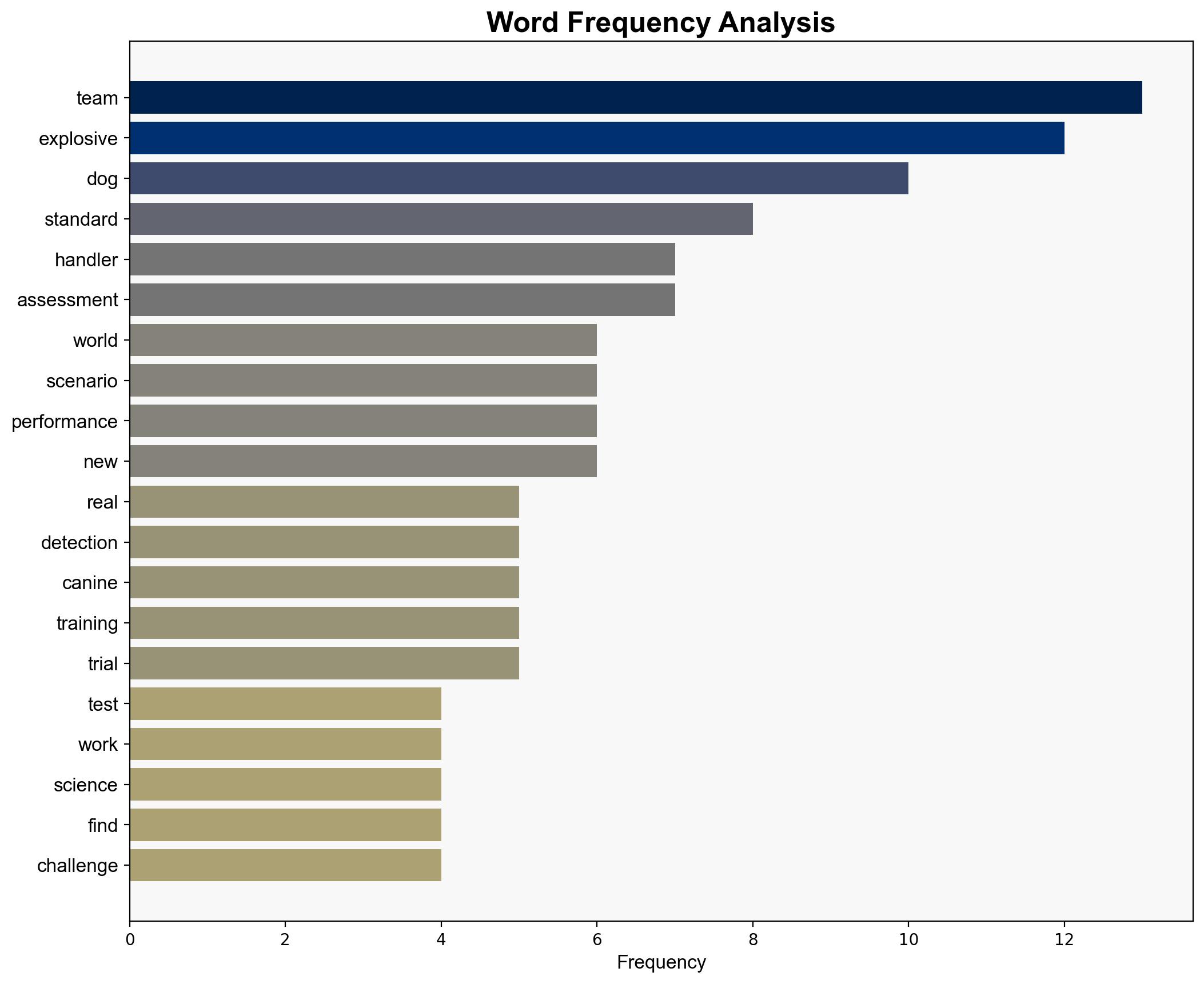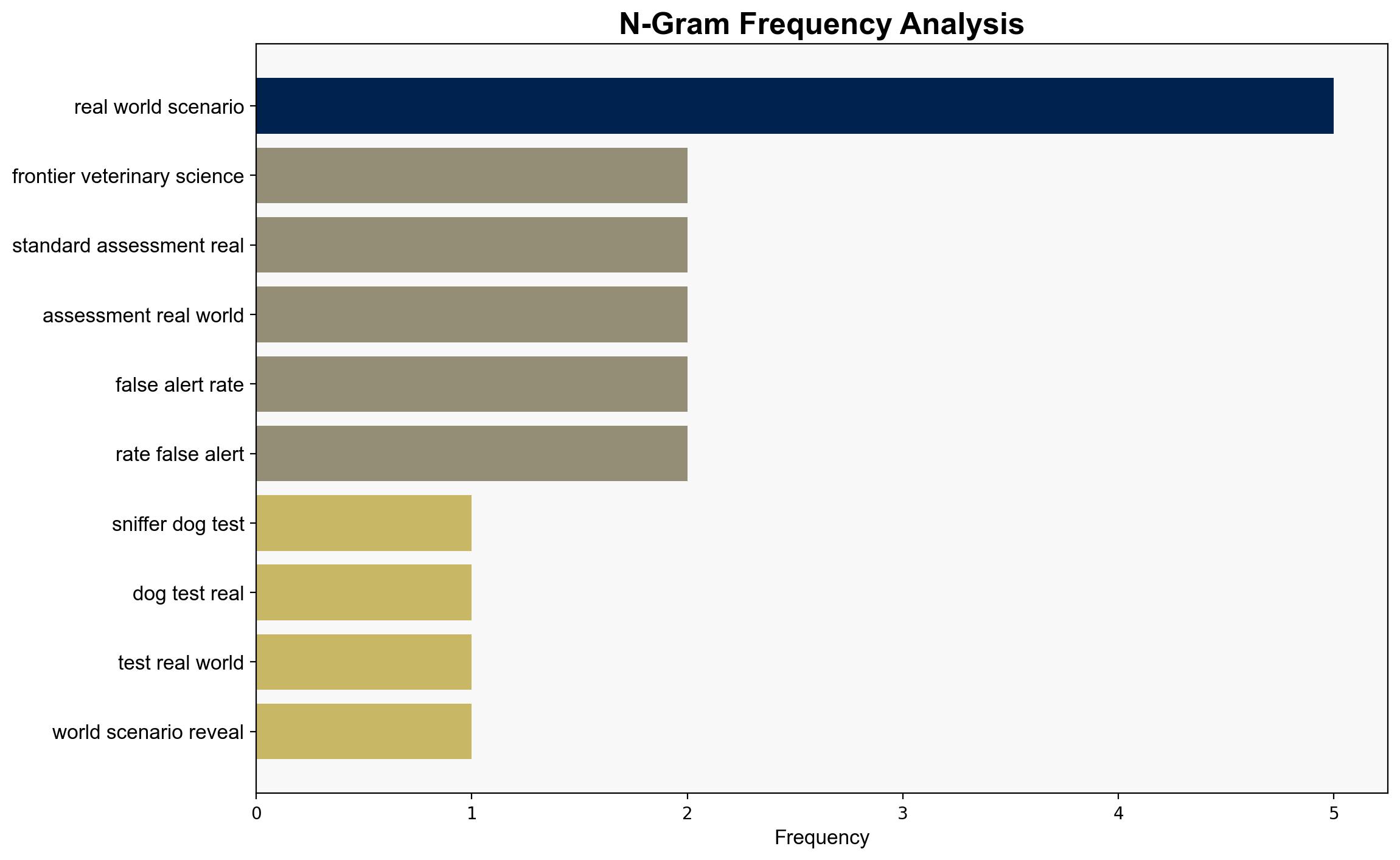Sniffer dogs tested in real-world scenarios reveal need for wider access to explosives – Phys.Org
Published on: 2025-10-16
Intelligence Report: Sniffer dogs tested in real-world scenarios reveal need for wider access to explosives – Phys.Org
1. BLUF (Bottom Line Up Front)
The most supported hypothesis is that the performance of sniffer dogs in detecting explosives is significantly hindered by limited access to diverse training materials and environments. This report suggests enhancing access to varied explosive materials and real-world training scenarios to improve detection accuracy. Confidence level: Moderate.
2. Competing Hypotheses
1. **Hypothesis A**: The primary limitation in sniffer dog performance is the lack of access to a wide variety of explosive training materials, leading to inconsistent detection capabilities across different scenarios.
2. **Hypothesis B**: The variation in sniffer dog performance is mainly due to environmental and handler-related factors, such as the physiological state of the dogs and the quality of the handler-dog bond, rather than the availability of explosive materials.
Using Analysis of Competing Hypotheses (ACH), Hypothesis A is better supported by the evidence, as the report highlights geographic variations and the handlers’ expressed need for more diverse training opportunities with explosives.
3. Key Assumptions and Red Flags
– **Assumptions**: It is assumed that increased access to explosive materials will directly improve detection accuracy. Another assumption is that the current training standards are insufficient for real-world application.
– **Red Flags**: The report lacks specific data on the types of explosives used in training and the exact conditions of the real-world scenarios. There is also an absence of comparative performance metrics from other detection methods.
4. Implications and Strategic Risks
The limited access to diverse explosive materials for training poses a risk to national security by potentially reducing the effectiveness of sniffer dogs in real-world counter-terrorism operations. If not addressed, this could lead to increased vulnerability to explosive threats in high-risk areas such as airports and public events. Additionally, reliance on outdated training methods could result in a false sense of security.
5. Recommendations and Outlook
- Expand access to a wider range of explosive materials for training purposes to enhance detection capabilities.
- Develop standardized protocols for real-world scenario training to ensure consistency across regions.
- Scenario-based projections:
- Best: Improved training leads to enhanced detection rates and reduced false alerts.
- Worst: Continued limitations result in significant security breaches.
- Most Likely: Incremental improvements in training access lead to gradual performance enhancements.
6. Key Individuals and Entities
– Sadie Harley
– Robert Egan
– Dr. Lauryn DeGreeff
– Dr. Paola Prada Tiedemann
– Geoff (handler)
– Toni (handler)
7. Thematic Tags
national security threats, counter-terrorism, training standards, explosive detection, regional focus





